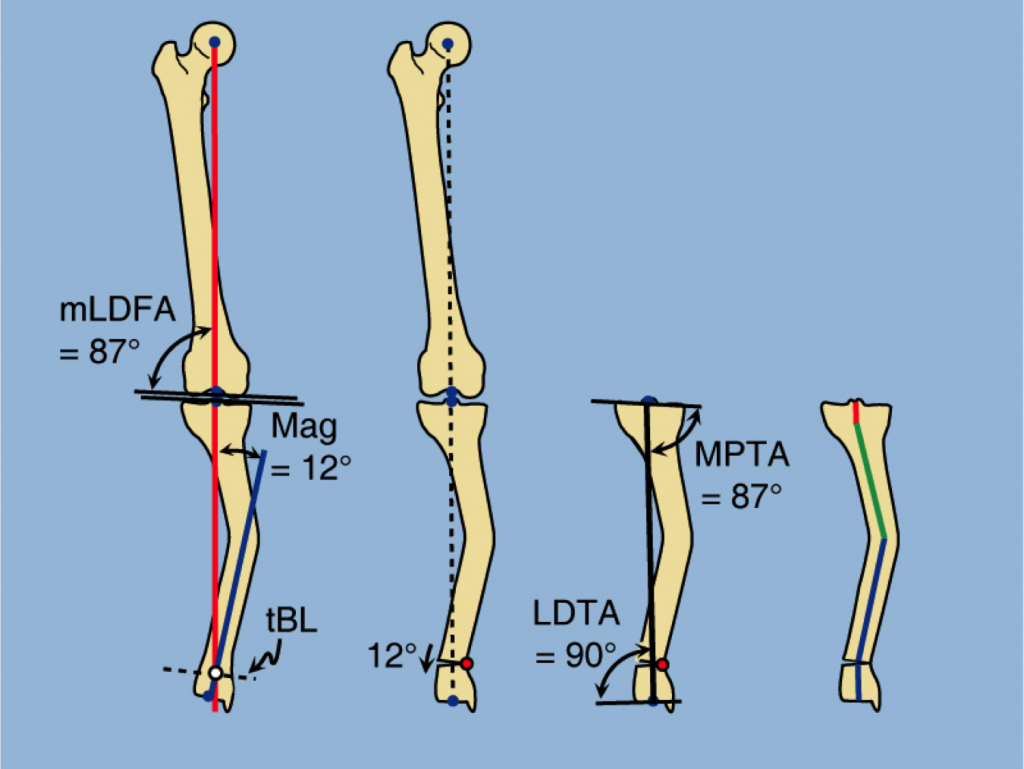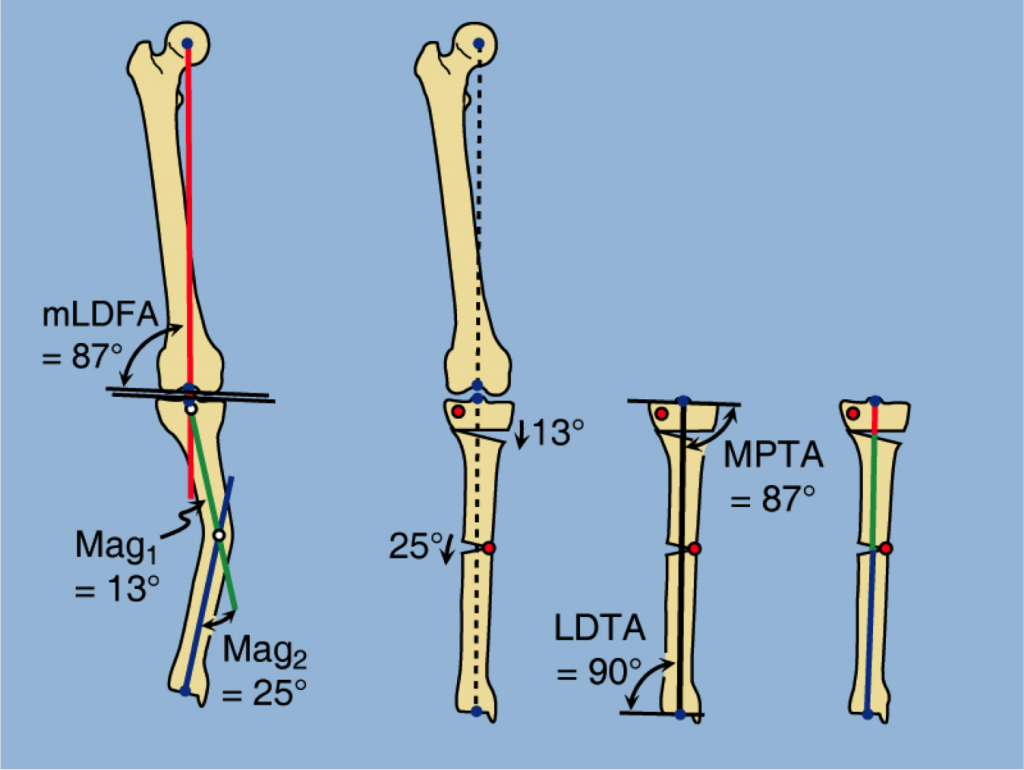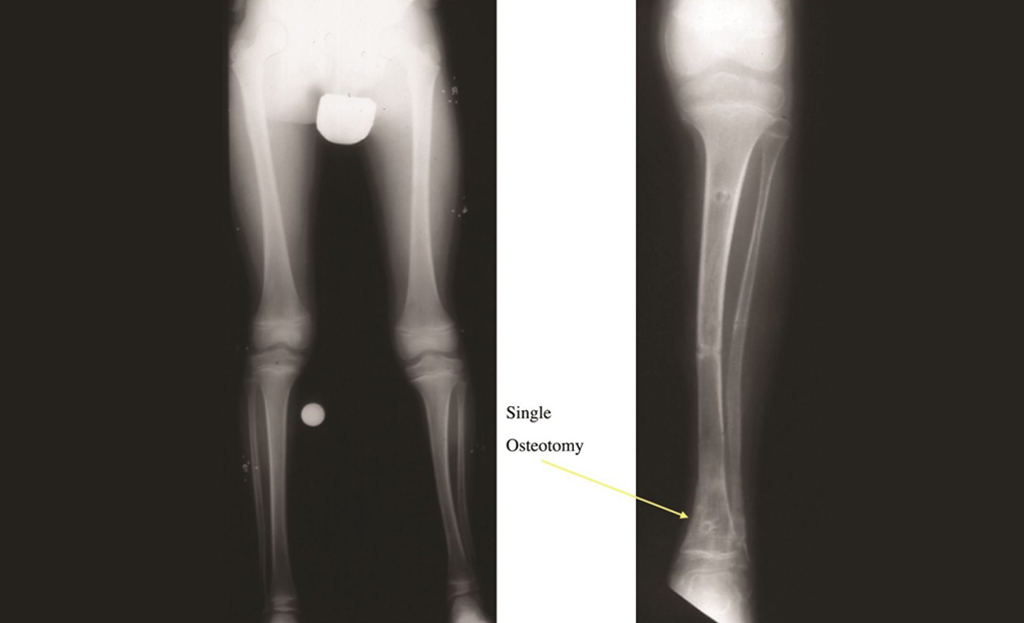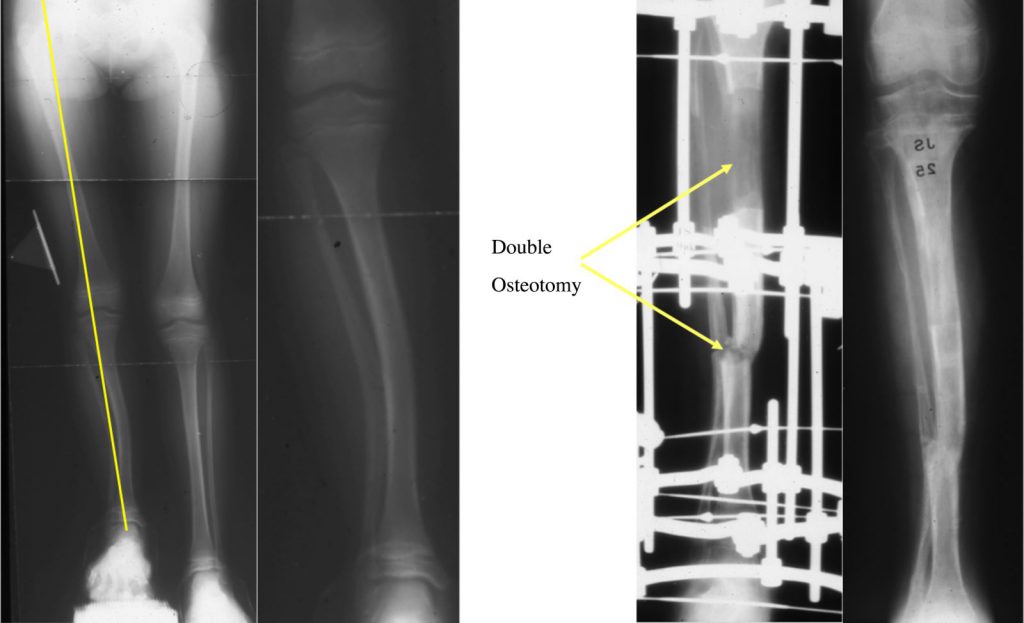At the Paley Institute, we recommend surgical treatment for posteromedial bowing of the tibia for correction of angular deformity and lengthening of the leg. Traditionally, the timing of treatment was later in the child’s life, but some surgeons have spearheaded performing the surgery earlier. Dr. Paley began operating on patients with posteromedial bowing of the tibia as early as age two since 1990.
Many of his patients are now adults and have normal ankles and normal alignment with equalization of limb length. One case example is a girl who recently wrote him talking about how she is a competitive college tennis player many years after successful treatment for her posteromedial bowing of the tibia. Her testimonial is included.

Uni-apical osteotomy. While there is an overall alignment between
hip, knee, and ankle (red line), there is a 12 degree angular
deformity of the tibia (blue line). A single osteotomy near
the ankle and elevation of 12 degrees realigns the tibia.
The knee and ankle are in normal orientation.
The axis of the tibia is zigzagged (green line).

Bi-apical osteotomy. The line between the hip and the knee does not pass through the ankle (red line). There are two different centers of rotation of angulation (CORA) at the tibia. One is 13 degrees (green line) and the other is 25 degrees (blue line). Two osteotomies are performed and the knee and ankle joint orientations are returned to normal. The red, green, and blue lines are all one axis. The anatomic axis of the tibia is straight and completely aligned.

Example of a single osteotomy in patient with posteromedial bowing of the tibia

Example of a double osteotomy for correction of posteromedial bowing of the tibia
The results of surgery for posteromedial bowing of the tibia, if treated early, is a normal leg with normal alignment and normal length. The results if treated late, before degenerative changes of the ankle joint occur, can be equally as good. The results of treatment if treated late, after degenerative changes to the ankle joint have occurred, treatment may include an ankle fusion and possibly subtalar fusion to treat the degenerative changes.
Limb lengthening requires careful consideration of the joint contractures and a deep understanding of the condition. Without the requisite knowledge, lengthening can result in a worse result, including degeneration of the affected joints. It is therefore extremely important to have a good understanding of the complexity of this condition and to address all of its components, including:
Dr. Paley has extensive experience in treating posteromedial bowing of the tibia, as well as almost 30 years of experience in limb lengthening and deformity correction. Many of Dr. Paley’s patients with posteromedial bowing of the tibia are now adults with completely normal ankles, normal legs, and no limb length discrepancy.